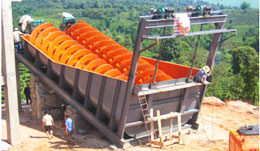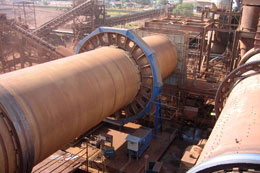-
Sand Making Crusher
- PCL-Vertical Shaft Impact Crusher
- SBM Hydraulic VSI Crusher
- VSI5X Series Impact Crusher
Chrome ore grinding plant
Chrome ore grinding plant(Ball Mill)
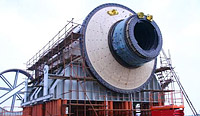
In almost all the metallurgical processes, grinding is considered to be an inseparable unit operation which is adopted at the very first stage of a series of other unit operations and/or unit processes. Size reduction of solids is done almost invariably. Ball mill finds its application in many industries like brewing industry, chrome ore grinding processing, chemical, confectionery, metal powder, mineral preparation, paint preparation, paper, pigments for color industry, cement and limestone, powders for the detergent industry, pulverized coal for power generation,ect.
Chrome ore grinding plant(Raymond Mill)
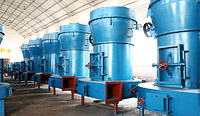
Raymond Roller Mill is suitable for minerals powder grinding, which is widely used in the chrome ore grinding processing, iron ore grinding processing, manganese ore grinding processing. It can be used for grinding rock like barite, calcite, potash feldspar, talc, marble, ceramic, glass and some other material that Moh's hardness degree is below 7, humidity is in 6%, and non-flammable non-explosive minerals. The final product size is adjustable as required in the range of 100-325 meshes.
Chrome ore grinding plant(Vertical Roller Mill)
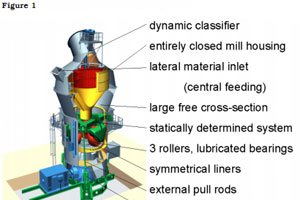
The basic operating principle of the vertical roller mill is shown in Figure 1. The feed is ground between the three stationary grinding rollers and the rotating grinding table by compression and shear. The compression force required for the comminution is generated by a hydropneumatic tension system. The material is ground and conveyed towards the stationary air-ported ring by centrifugal force. Hot gases flowing up through the air-ported ring mix with the material and create a fluidised bed, where the drying and/or calcining process takes place. Fine material is carried up to the classifier by the gases. The material is divided into fine product and grits in the separating zone near the rotating classifier wheel. The grits fall back into the centre of the grinding zone. The finished product leaves the classifier together with the gas stream and is separated from the gas in a downstream filter unit. With modern mills, the rollers are lifted during start-up, which simplifies the starting procedure and reduces the necessary starting torque. An auxiliary drive for starting purposes is therefore no longer needed.
- Limestone Crusher
- Barite Crusher
- Granite Crusher
- Kaolinite Crusher
- Calcite Crushing
- Tombarthite Crusher Mill
- Bentonite Grinding Plant
- Basalt Ore Crusher
- Lignite Crusher Mill
- Silica Ore Crusher
- Tin Ore Mine
- Lead and Zinc Ore Crusher
- Ochre Crusher Mill
- Garnet Crusher
- Mica Crusher
- Asbestos Crusher
- Manganese Ore Crusher
- Talc Crusher Mill
- Feldspar Crusher
- Iron Ores Crusher
- Dolomite Crusher
- Quartz Crusher
- Gypsum Crusher
- Calcium Carbonate Grinding
- Chrome ore washing
- Chrome quarry
- Chrome ore beneficiation
- Chrome ore screening
- Chrome mining
- Chrome grinding
- Chrome crushing
- Chrome ore processing
- About Us
- |
- Service
- |
- News & Events
- |
- Contact Us
- |
- Resources
- |
- Showroom
Aggregate Crusher
Artificial Sand Making
Ballast Crushing Machine
Basalt Stone Crusher
Barite Mine Process
Beneficiation Plant
Bentonite Crusher
Bentonite Milling
Calcium Carbonate Crusher
Calcium Carbonate Grinding
Cement Grinding
Concrete Crusher
Coal Crusher
Copper Crusher
Cement Mill
Chrome Mining Process
Copper ore Beneficiation
Coal Processing
Coal Pulvarizer
Feldspar Crushing
Feldspar Grinding
Flotation Machine
Gold Crusher
Gold Mine Equipment
Gold Processing Machinery
Granite Crusher
Granite Crushing Machine
Granite Quarry Equipment
Gypsum Crusher
Gypsum Mining
Gypsum Powder Production
Iron Ore Beneficiation
Iron Ore Crusher
Kaolin Processing Plant
Limestone Crusher
Silica Sand Crusher
Iron Ore Mining Equipment
Cement Production Line
Talc Production Line
Quartz Crushing Machine
Limestone Mining Process
Manganese Benificietion


